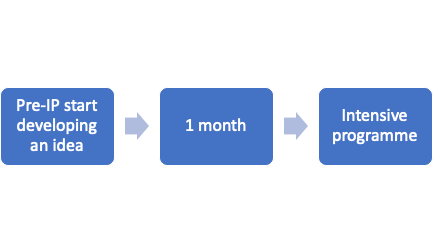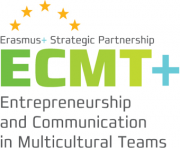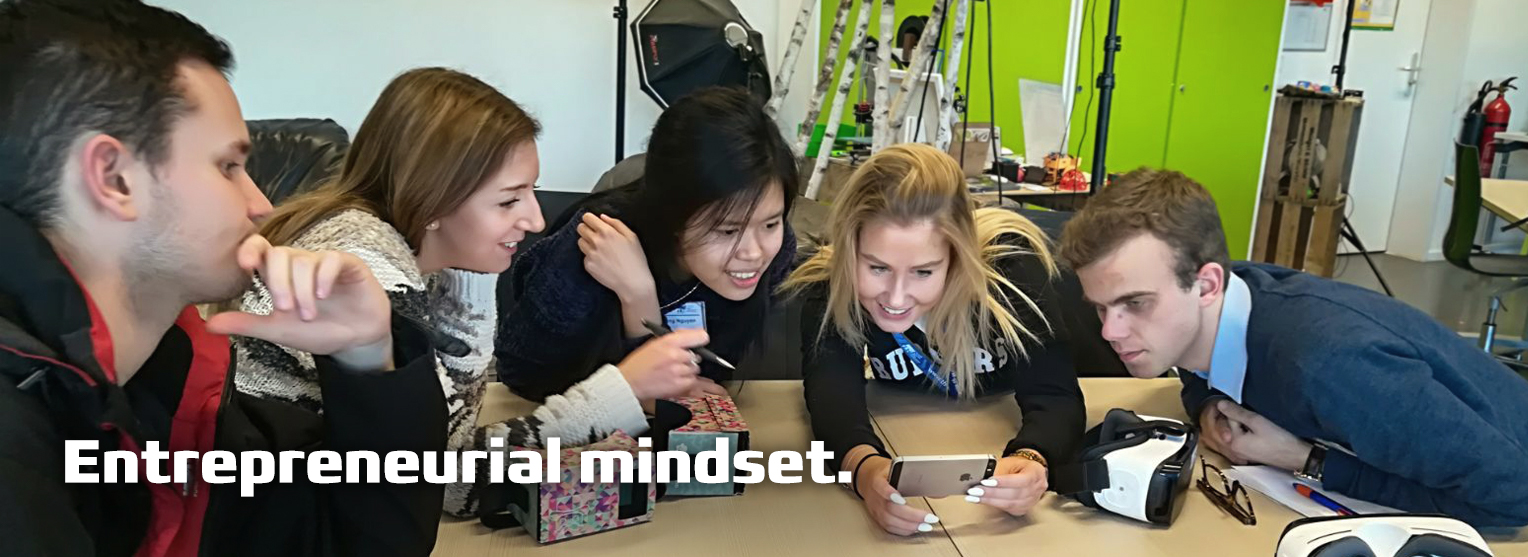Curriculum Development ECMT+ Output
Author: Ron Beirens and ECMT+ team, Vives University of Applied Sciences
ECMT+ Intensive Program introduced by lecturers and students
Overview
This curriculum has been developed over 3 years to introduce students in Entrepreneurship to an intensive multicultural programme.
For whoever wants to develop an intensive course on this topic, it should prove very useful. If you develop a programme that can only comprise a few hours, using parts of the curriculum can be usefully incorporated into a lecture.
The greatest benefit would, however, be gained if the whole module were used as a training programme that takes at least 10 days and probably should not last more than 20 days.
Students ideally would have some knowledge of marketing and business plans. If not. some basic courses in these fields should be added. In our experience the financial part including a forecast is the most challenging for students to tackle. A 10-day programme without prior knowledge of a financial plan is not sufficient. Asking students to develop a full business plan, including well developed finance data, makes it necessary to add some extra days before the intensive course starts. Extending the intensive programme for more than 10 days I would not recommend as it makes the programme too intense and strenuous.
Planning a break for students and lecturers after the programme is recommended.
Reflection
After this 3-year experience in this ECMT+ project it became obvious that a 10-day intensive programme proves more effective than several courses spread over one or more semesters. Courses should be aimed at preparing an intensive course including the basics of marketing and finance and language skills (English) as well as other transversal skills.
How to organise
Timing
At least 1 month before the intensive course students should be developing their creativity. We call this the pre-ip. During this time students will develop a business idea. See Pre-IP material. The reason for the time in-between is that developing an idea takes time and students may be busy with other courses.

We work with international teams
After this time the students can start the intensive two weeks. It will depend on the format of the programme how this will be organised. In our case it was developed as an international cooperation with different partners from different countries. The teams were multicultural and were mixed.
How this was done?
We worked with a formula we called ‘Market place’. On the first day all the national teams presented 3 ideas too all students, then students were invited to join the best idea. The coaches then have to rebalance the groups so that every team consisted of each nationality. Although that causes some friction because a student might be assigned to an idea that he/she had not chosen, we decided to tolerate this inconvenience in order to guarantee the international character of the team.
We don’t work with international teams
You can work with a formula we called ‘Market place’. On the first day all so called national teams presented 3 ideas to all students who can then join the best idea. The coaches then have to rebalance the groups.
Ideal number of students and size of the groups
We worked with groups between 40 and 50 students. Size of the groups 6 students but not more than 8.
Staffing
Expertise for staff:
Teamworking: ice breaking, team building, multicultural (1-2 staff members working in team)
Idea generation: creativity follow-up, design thinking (1-2 staff members working in team)
Marketing: general introduction to Entrepreneurship (intrapreneurship), Business Model Canvas, PESTEL analysis, lean start-up, marketing, social media, web developing skills, interview techniques including customer characterisation and personas…. just to name a few (different staff members depending on expertise 2 or more)
Financing: Business plan including financial plan, funding...(1-2 staff members working in team)
Pitching: visualisation, preparing pitch structure (1-2 staff members working in team)
Coaches for the 10-day exercise. One for each group in our case 8 at least 4 for 8 groups.
Total staff needed: min 8 best 16.
Examples of a 10 day programme
Preparation of an intensive programme
Let students work on self-knowledge concerning group roles (Belbin), introduce them to project management and start with the creativity module best at least one month before the intensive 2 weeks.
Link to:
How to start developing a business idea you can find in our blended module:
Course materials
Course materials are arranged around 5 topics:
Transversal skills, Entrepreneurship, Marketing and related topics, Finance-Business plan-Funding, Social Entrepreneurship
Transversal skills: Communication-Teams-Multicultural-Icebreakers
communication skills: Icebreaker
team-working skills,
planning and organisation skills
link to project management PowerPoint:
Creativity skills and problem solving skills,
pre-ip creativity 2018-19 and creativity module in blended learning
Entrepreneurship
We’ve decided not to deal with all topics related to a starting venture under Entrepreneurship but only the general introduction.
You can give students a general overview of Entrepreneurship through:
Ideas for starting with: lean start up
Marketing and related topics
General introduction to marketing
Conceptualising the environment:
Analysing market opportunities:
What's a business model?
Analysis of the Business canvas Model
Marketing planning: segmentation and personas
Marketing mix
Marketing research
Evaluating and testing
Finance- Business plans-Funding
Essentials of business planning
Funding
Social Entrepreneurship
A general introduction can be found in:
As it has recently been shown that impact is key, please find social impact measurement





